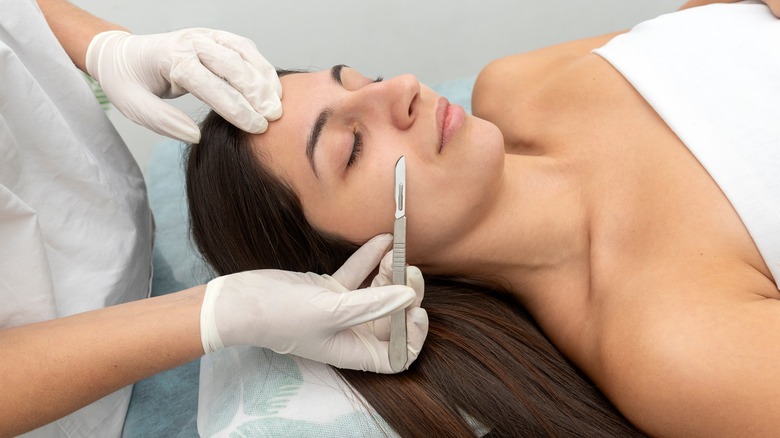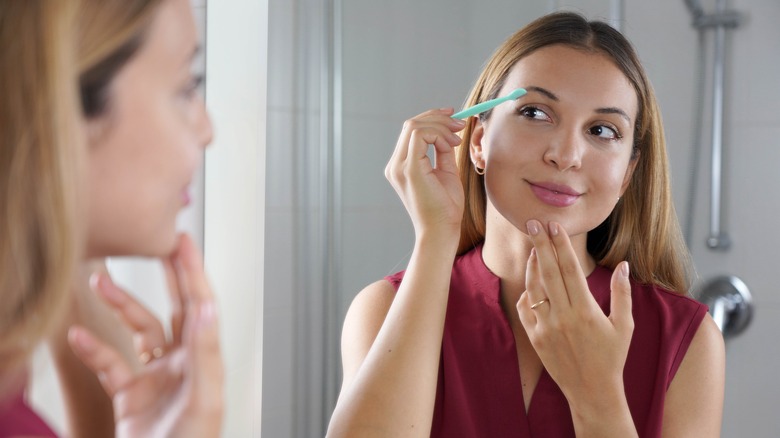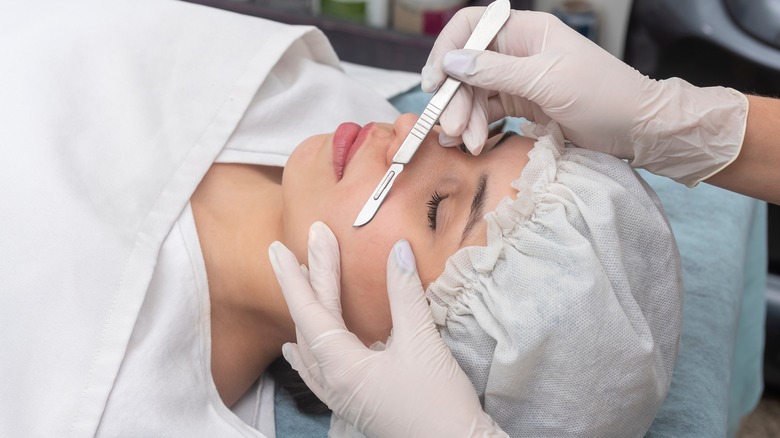Will Dermaplaning Make Your Hair Grow Back Thicker? We Get To The Bottom Of It
Dermaplaning has been growing in popularity in recent years. "Dermaplaning is a method of exfoliation wherein the practitioner uses a curved surgical blade to remove fine facial hair along with the surface layer of skin," Danielle Gronich, a clinical esthetician, explained to Women's Health. This practice was originally done by medical professionals in the 1980s before going mainstream. Dr. Loretta Ciraldo, a Miami-based board-certified dermatologist, explained to the publication that it was common practice to use a scalpel to exfoliate dead skin off of clients' faces.
Due to the benefits people have been seeing after dermaplaning, many have come to believe that dermaplaning is good for your skin. However, like most skincare practices, there are quite a few misconceptions that people have started to believe over the years — one of them involving the side effects of dermaplaning. Because of its nature, some believe that dermaplaning can make your facial hair grow back thicker, but is that the case? It may seem that way, but your hair follicles are actually not affected.
Dermaplaning and body hair
The idea that shaving causes the hair to grow back thicker has been a narrative for a long time. However, this has been one of the biggest misconceptions regarding this form of skincare. "After shaving, you may notice that your hair seems to grow back thicker and darker," dermatology resident Dr. Taylor Bullock explained to the Cleveland Clinic. "But this is actually due to the variation of the hair shaft along its length, not because shaving has actually altered the hair follicles."
The idea of this happening on the face can be worrisome. However, it should be noted that while shaving the body with a razor can create stubble, dermaplaning on the face does not usually have the same effect. Dr. Loretta Ciraldo, a Miami-based board-certified dermatologist, told Women's Health that it is because dermaplaning involves removing peach fuzz and does not create stubble. This means individuals do not have to worry about their facial hair appearing thicker or darker.
Should you try dermaplanning?
There is plenty to know before you try dermaplaning, including whether you are the right fit for the treatment. Danielle Gronich, a clinical esthetician, explained to Women's Health that the best people for the treatment have very rough skin. Dermaplaning results in exfoliation, allowing the skin to better absorb products upon the removal of dead cells. "This is also great for those who want a significant exfoliation experience without a chemical peel," she told the publication. Generally speaking, exfoliation is minimally invasive compared to other procedures.
According to Women's Health, the procedure is relatively simple and lasts no more than 30 minutes. The expert preps the skin for dermaplaning by using softening enzymes to make the process easier. From there, they remove the peach fuzz with a scalpel, revealing smooth and newly sensitive skin. The practitioner or doctor then applies a serum to the skin to relieve any irritation.


